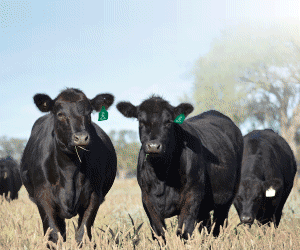The accuracy values calculated from the WAE are known as Beef Improvement Federation (BIF) accuracies. Like EPDs, BIF accuracies are the usual language for accuracies used in the North American beef industry.
Compared to the accuracy values we see from TACE (known as Traditional accuracy), BIF accuracies are generally lower, particularly for young animals, and are slower to increase in value as more data (e.g. own phenotypes, genotypes, progeny phenotypes etc) becomes available.
The difference in scale is simply a function of different methods to calculate the same thing. Like pounds compared to kilograms or inches compared to centimetres. For those more technically minded, this is further explained at Accuracy – BIF Guidelines Wiki (beefimprovement.org)
The relationship between TACE and BIF accuracies are shown in Figure 1. For example, BIF accuracy of 0.2 (20%) is equivalent to a TACE accuracy of 0.6 (60%).







